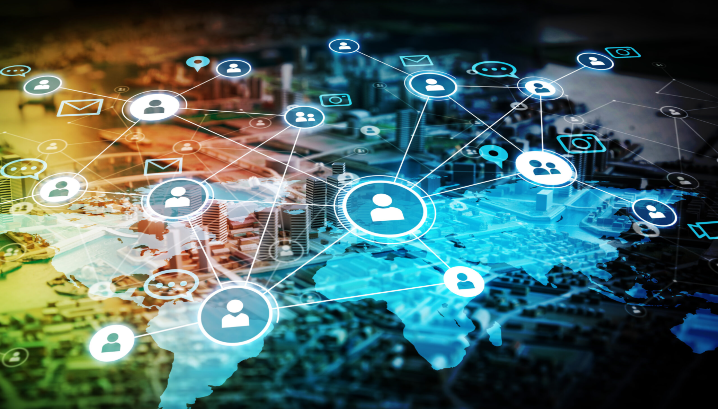Social Intelligence
IntSpy Social Media Intelligence: Gather, Analyze, and Influence – Complete Intelligence Solutions for Monitoring and Strategic Engagement.



[MODULE]Social Media Intelligence on platform
IntSpy Social Media Intelligence Overview
The IntSpy Social Media Intelligence module provides comprehensive intelligence by gathering, analyzing, and leveraging data from social media platforms. It serves multiple functions, ranging from proactive threat detection to strategic engagement, public sentiment analysis, and evaluating social actions like mass mobilizations. This module helps organizations, agencies, and intelligence operations understand public discourse, track threats, predict mass actions, and gather insights on adversaries as well as opportunities.
Key Features and Sub-Modules of Social Media Intelligence
-
Social Media Data Collection
- Real-Time Data Gathering: The Social Media Intelligence module continuously collects data from various social media platforms, including Twitter, Facebook, Instagram, LinkedIn, and others. This includes public posts, comments, mentions, and trending topics, ensuring that users have real-time access to what is being discussed online.
- Cross-Platform Monitoring: By integrating data from multiple platforms, users can gain a comprehensive understanding of cross-platform behaviors and narratives. This provides a holistic view of how particular topics or individuals are perceived across different social channels.
- Keyword and Hashtag Monitoring: Users can set specific keywords, hashtags, or phrases for continuous monitoring. This helps detect conversations relevant to targeted subjects, emerging trends, or potential threats. Real-time alerts are generated when these monitored keywords reach critical levels of discussion.
-
Sentiment Analysis
- Public Sentiment Monitoring: The module uses AI-driven sentiment analysis to classify social media content as positive, negative, or neutral. This helps users understand public sentiment around a particular topic, brand, organization, or individual.
- Emotion Detection: In addition to general sentiment, advanced AI models analyze content to detect emotions such as anger, fear, joy, or sadness. This allows organizations to gauge the emotional temperature of conversations and react accordingly, which is critical for managing crisis situations or public relations campaigns.
-
Threat Detection and Early Warning System for Mass Actions
- Threat Actor Monitoring: The Social Media Intelligence module allows users to monitor individuals, groups, or organizations that may pose a threat. This includes tracking the online activities of hacktivist groups, adversarial influencers, or other suspicious entities.
- Cyber Threat Indicators: By analyzing social media activity, the system can identify early indicators of cyber threats. For example, a surge in discussion about specific vulnerabilities or tools among underground groups may indicate the likelihood of upcoming attacks.
- Mass Mobilization and Social Action Alerts: The module tracks conversations that indicate the organization or planning of mass actions, such as protests, demonstrations, or civil unrest. It identifies the scale of social engagement, patterns of mobilization, and the likelihood of such events materializing. Real-time alerts can be configured to notify users when conversations about specific events reach critical thresholds, enabling proactive response.
- Event Risk Detection: Monitoring conversations related to planned events or critical situations provides insight into potential threats. Users can track the planning and discussion of protests, social unrest, or even organized cyber-attacks to anticipate and mitigate risks.
-
Influencer and Network Analysis
- Influencer Identification: This feature helps identify key influencers within specific topics or communities. Users can track individuals who have the most impact on public opinion, allowing organizations to understand and predict shifts in public discourse.
- Network Mapping: The module can map relationships and interactions between different social media users, providing insights into how information spreads and identifying potential networks of influence. This can be crucial for identifying the social connections between threat actors or understanding a community’s structure.
-
Content Discovery and Deep Search
- Advanced Search: The module allows for advanced searches across multiple platforms based on user-defined filters such as location, time, sentiment, language, and type of content. This feature is useful for finding specific information related to a person of interest, a campaign, or an event.
- Historical Data Analysis: Users can access historical data to track how discussions have evolved over time. This is useful for understanding trends, assessing the effectiveness of a campaign, or analyzing the timeline of an event to identify key inflection points.
-
Social Media Username Check
- Account Detection: This sub-module helps locate and verify usernames across different social media platforms. It allows users to track an individual’s digital presence and determine if multiple accounts are operated by the same person.
- Fake Account Identification: By comparing username patterns, profile pictures, and content, the system helps detect fake or impersonation accounts. This feature is critical for protecting brand integrity, identifying potential misinformation campaigns, and mitigating threats posed by fake accounts.
-
Geolocation and Trend Analysis
- Geotagging and Location-Based Insights: For posts that are geotagged, the module extracts location data to identify geographic patterns of activity. This is useful for identifying the origins of discussions, monitoring events, and understanding regional trends.
- Regional Trend Analysis: The module allows for analyzing regional trends, providing insights into how different geographical areas react to certain events. This helps organizations localize their messaging or prepare for potential threats in specific areas.
-
Campaign Analysis and Audience Engagement
- Campaign Performance Tracking: Organizations can track the performance of social media campaigns using metrics like reach, engagement, likes, shares, and comments. This helps assess the impact of public relations efforts, identify what resonates with audiences, and optimize future campaigns.
- Audience Insights: The module offers deep insights into audience demographics, interests, and behaviors. Understanding these characteristics allows organizations to fine-tune their communication strategies and effectively target audiences.
-
Social Media Intelligence for Influence Operations
- Narrative Control and Influence Campaigns: The module can be used to influence public opinion by identifying key narratives and disseminating counter-messaging where appropriate. It helps users understand prevailing narratives and identify opportunities for influence operations.
- Engagement Strategy Development: The data gathered and analyzed is used to develop strategies to engage with audiences, shape opinions, and promote desired narratives, particularly during critical incidents or sensitive public discussions.
-
Visualization and Reporting
- Real-Time Dashboards: Users have access to real-time dashboards that visualize social media data, allowing them to track metrics such as mentions, sentiment, and engagement across different platforms. This helps in monitoring campaigns, tracking incidents, and getting a quick overview of social dynamics.
- Custom Reporting: The Social Media Intelligence module provides the ability to create custom reports based on collected data. These reports can be generated periodically or as needed and include detailed visualizations, metrics, and insights tailored to the organization’s specific needs.
Use Cases and Applications
-
Threat Detection and Incident Management
- The Social Media Intelligence module helps in identifying threats early by monitoring hostile actors, suspicious discussions, and early indicators of coordinated attacks. Organizations can use this information to develop response strategies and mitigate risks effectively.
-
Early Warning System for Mass Actions
- The module provides early alerts about planned mass actions such as protests, social unrest, or public mobilizations by evaluating social engagement levels and tracking coordination efforts. This allows users to take preventive measures or prepare for potential disruptions before these events occur.
-
Brand Protection and Crisis Management
- Through real-time monitoring and sentiment analysis, organizations can detect and react to potential crises before they escalate. For example, negative sentiment around a brand can be identified early, allowing public relations teams to address concerns before they spiral out of control.
-
Influence and Psychological Operations (PsyOps)
- The module is valuable for identifying narratives that adversaries are attempting to spread and for developing counter-narratives to mitigate misinformation. By understanding the sentiment and identifying influential users, organizations can effectively counter misinformation and shape public opinion.
-
Operational Planning and Situational Awareness
- Intelligence gathered from social media can provide valuable situational awareness during operational planning. Monitoring social media for local sentiment, event discussions, and public movement allows organizations to adjust their approach based on the local landscape and predict potential challenges.
-
Strategic Communications
- Organizations can track public discussions related to a specific topic to adjust messaging accordingly. By understanding what resonates with the audience, they can develop more effective communication strategies and create content that aligns with public sentiment.
Key Benefits of the Social Media Intelligence Module
- Real-Time Threat and Risk Visibility: Provides continuous monitoring of social platforms to identify threats in real-time, enabling a proactive approach to mitigating risks and dealing with emerging threats.
- Early Warning for Mass Mobilization: The module functions as an early warning system, evaluating the risk of mass actions such as protests or unrest, and notifying users of potential disruptions in advance.
- Enhanced Understanding of Influence Networks: Identifies key influencers and relationships between different social media users, providing insights into how information spreads and who drives public discourse.
- Cross-Platform Analysis: Integrates data from multiple social media platforms, offering a comprehensive view of public sentiment, emerging trends, and influencer dynamics.
- Comprehensive Campaign Analysis: Tracks and evaluates social media campaigns, providing deep insights into performance metrics, audience engagement, and sentiment, which are valuable for strategic adjustments and decision-making.
- Proactive Influence Capabilities: The module provides users with the tools to not only monitor but also influence public discourse by countering hostile narratives and promoting favorable messaging.
Integration and Usability
- The Social Media Intelligence module is fully integrated with the overall IntSpy platform, providing seamless access to other intelligence capabilities, such as Cyber Intelligence and Field Intelligence, for a well-rounded operational approach.
- The platform’s flexible architecture allows integration with external data sources to enrich social media insights, giving users the most comprehensive intelligence possible.
- Customizable Dashboards and Reporting tools make it easy to monitor social dynamics, visualize trends, and prepare data-driven reports for stakeholders, ensuring effective communication of critical insights.
